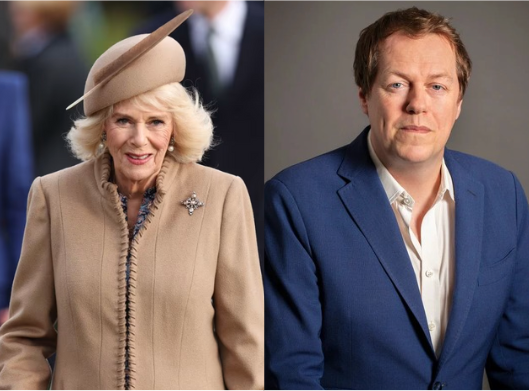New Scandal: King Charles MELTDOWN As Queen Camilla’s Son reveals the Heartbreaking Truth About his Mother, Shock the Entire…

New Scandal: King Charles MELTDOWN As Queen Camilla’s Son reveals the Heartbreaking Truth About his Mother, Shock the Entire Royal Family
Tom Parker-Bowles, Camilla’s eldest son, has decided to break his silence and set the record straight about his mother, offering a refreshing and humanizing perspective on the Queen Consort. Known for his culinary expertise, Parker-Bowles opened up during a recent appearance on the White Wine Question Time podcast, sharing truths that counter long-standing rumors about Camilla.
Clearing Up Misconceptions About Camilla’s Lifestyle
In his interview, Tom tackled some persistent myths, notably dispelling the image of Camilla as a heavy drinker. “I’ve never seen her tipsy,” he said, while also addressing the false assumption that she enjoys gin. “She doesn’t drink gin,” he clarified, emphasizing that while Camilla enjoys a glass of red wine at social events, she does so in moderation. Additionally, Tom revealed that his mother quit smoking over two decades ago, debunking the image of her as a habitual drinker and smoker. His candid comments come at a time when the British monarchy is seeking to connect with the public on a more personal level, and Tom’s testimony helps humanize Camilla’s image.
Childhood Memories and Royal Anecdotes
Beyond addressing the rumors, Tom shared a charming memory from his childhood involving Queen Elizabeth II. He recalled meeting the Queen as a young child and, out of nervousness, curtsying instead of bowing his head. “I was so scared that I curtsied,” he said, laughing at the memory.
Tom’s Culinary Work and Family Legacy
As a food critic and author, Tom has explored the culinary history of the monarchy in his book Cooking & the Crown, where he delves into monarchs’ personal tastes and the significance of palace cuisine. He also recounted that the reputation for generous drinking at court stems from his grandmother, the Queen Mother, who was known for her fondness for gin, wine, and champagne—a tradition Camilla did not adopt.
A Different Perspective on Camilla
With his simple, honest words, Tom Parker-Bowles has provided a fresh perspective on Camilla, countering stereotypes and showcasing her as a balanced and aware figure. His candid comments have not only surprised the public but even caught King Charles III off guard. Tom’s portrayal adds a personal, human touch to the Queen Consort’s image, offering insight into her true character and dispelling myths that have long surrounded her.




